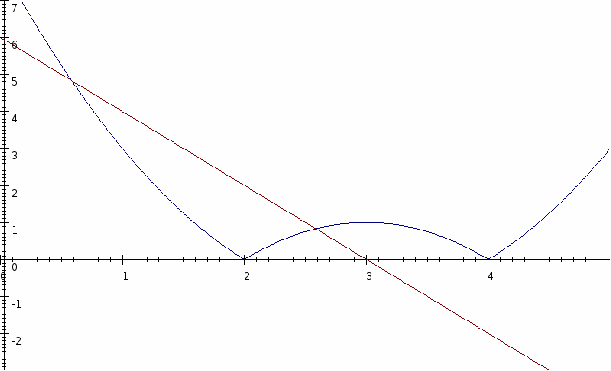Inequalities involving modulus functions may be defined analytically over several intervals, and solved in each interval. Your answer may be assisted by a sketch, which will assist you in eliminating unnecessary algebra looking for solutions which do not exist in certain intervals. Sometimes this is the best way to obtain a real picture of what is going on. For example to solve the inequality![]() we would sketch the curve
we would sketch the curve![]() and the line
and the line![]() to find where they intersect and then remove the modulus sign – changing the sign if necessary - and solving in that interval.
to find where they intersect and then remove the modulus sign – changing the sign if necessary - and solving in that interval.

From the graph we can a see solution in the interval![]() is positive in this region since both factors are negative so multiply to give a positive number.
is positive in this region since both factors are negative so multiply to give a positive number.
We solve![]()
By inspection the resulting quadratic equation does not factorise hence we use the quadratic formula![]()
For the quadratic![]()
![]()
Only![]() is in the interval
is in the interval![]() so this is the root and because we want the the line to be above the curve we choose and
so this is the root and because we want the the line to be above the curve we choose and![]()
From the graph we can a see solution in the interval![]() is negative in this region since one factor is negative and the other positive so multiply to give a negative number. We introduce a minus to allow for this.
is negative in this region since one factor is negative and the other positive so multiply to give a negative number. We introduce a minus to allow for this.
We solve![]()
By inspection the resulting quadratic equation does not factorise hence we use the quadratic formula![]()
For the quadratic![]()
![]()
From the graph only![]() is in the interval so
is in the interval so![]() since we want the line to be above the curve.
since we want the line to be above the curve.
Hence![]()
